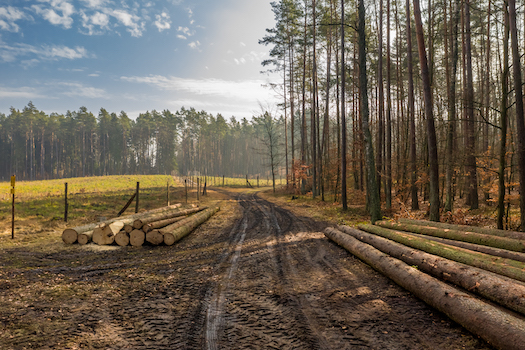Boggy beancounting
Even though wetlands can reduce floods and manage storm water as well as expensive man-made infrastructure, rarely is their value incorporated into local financial planning and asset management. At last month's Canadian Science Policy Conference, this challenge inspired an in-depth discussion, part of a session called "Implementing just and equitable nature-based solutions in Canada".
The conference panel deal with how communities' natural assets could be incorporated into policy decisions around protecting biodiversity as well as employing natural ecosystem services for municipal goals. This approach is reflected in a recently released report by the Municipal Natural Assets Initiative (MNAI) on the Grindstone Creek Watershed Natural Asset Project in Southern Ontario’s Halton Region. It shows the creek’s watershed provides storm water management services equivalent to more than $2 billion in engineered infrastructure, and about $34 million a year in other benefits, such as recreation, erosion control, and climate mitigation.
Flooding is Ontario’s most costly natural hazard, and with strains from aging infrastructure and tight municipal budgets, the value of natural climate-resilient wetlands and watersheds will only increase.
According to Roy Brooke, Executive Director of the MNAI, “Although we can’t reduce nature to a simple dollar figure, this [report] shows the enormous financial value of services communities are getting from nature. Protecting this asset avoids taxpayers getting stuck with a far higher bill to replace services that nature gives us already.”
The Grindstone Creek project is a first-of-its-kind in Ontario — bringing partners from across jurisdictions to explore the watershed’s worth in dollars. Supported by the Greenbelt Foundation, the project was conducted in partnership with the cities of Hamilton and Burlington, Conservation Halton, and the Royal Botanical Gardens.
“This report affirms the substantial economic value of critical natural assets and the importance of integrating this knowledge into municipal planning,” Greenbelt Foundation CEO Ed McDonnell told Research Money. “It is further proof that the Ontario Greenbelt is one of our greatest resources to address urbanization and climate change.”
The Grindstone Creek watershed also contains the greatest diversity of wildlife of any Canadian Forest Zone, including species found nowhere else in the country.
“In addition to being among the most biodiverse ecosystems, wetlands are extremely effective at trapping and storing carbon, and provide an important defense against extreme weather events,” said Pat Kehoe, Chief Conservation Officer at Ducks Unlimited Canada, a non-profit working to conserve, restore and manage wetlands for waterfowl, wildlife, and people.
“They mitigate floods and droughts, filter water, sequester carbon and serve as recreational spaces. Beyond the threats to our wildlife populations, the hazards of wetland degradation and loss could include increased insurance claims for property loss, boil water advisories, blue-green algae alerts, water-use restrictions, higher food costs, and overall deterioration in our quality of life.”
At a time when Ontario’s Greenbelt is being eyed for development, Kehoe emphasizes the importance of strong sustainable land-use planning policies that balance long-term environmental, social, and economic goals.
Read more: From Tragedy of the Commons to bookkeeper’s delight
He explained that a lot of urban areas were developed based on access to water and relatively flat terrain, where it is easy to build houses and run farms. Proper mapping of floodplains and related development policies have only become standard practice in the last 50 years. Still, many development policies do not address the frequency or severity of extreme weather events resulting from climate change.
“We’re working with municipalities and local conservation partners to restore wetlands and uplands [hilly areas]. The idea is to do this in advance of growth so that we’re building around these systems, instead of through or over top of them. Ideally, we’d like to see wetlands remain undisturbed. Where this isn’t possible, we support a mitigation hierarchy where impacts that can’t be avoided entirely are at least minimized.”
Together, Ducks Unlimited Canada and the Town of Aurora, Ontario, have successfully restored the wetlands that anchor Aurora’s community wildlife park. Property values for houses that border the wildlife park are higher than those that don’t, and preserving the wetland reduces the discharge of nutrients and other contaminants downstream to Lake Simcoe.
With many communities across Canada now at moderate or high risk of flooding, the insurance industry is also starting to take notice. Funded by 16 Canadian property and casualty insurance companies, The Nature Force initiative is working with Ducks Unlimited Canada to build up wetland systems close to urban areas to reduce flooding and erosion, while improving water quality through filtration.
Projects are being planned in urban adjacent areas and upstream watersheds across the Fraser River Delta in British Columbia, as well as in southern Ontario and Quebec, with priority given to the most populous communities.
According to Ontario Nature, that province has lost more than 72 percent of wetlands south of the Canadian Shield — and the losses continue, with land conversion for development the main threat. Although offsetting is becoming an increasingly popular way to make up for wetland destruction or degradation, it seldom fully compensates for wetland loss.
“When Canadians lose wetlands, they lose their connection with nature, their recreational space and their future security,” says Kehoe. “Wetland conservation and restoration is vital and needs to be prioritized for Canada to meet its climate action goals.”
R$
| Organizations: | |
| People: | |
| Topics: |
Events For Leaders in
Science, Tech, Innovation, and Policy
Discuss and learn from those in the know at our virtual and in-person events.
See Upcoming Events
You have 0 free articles remaining.
Don't miss out - start your free trial today.
Start your FREE trial Already a member? Log in
By using this website, you agree to our use of cookies. We use cookies to provide you with a great experience and to help our website run effectively in accordance with our Privacy Policy and Terms of Service.





